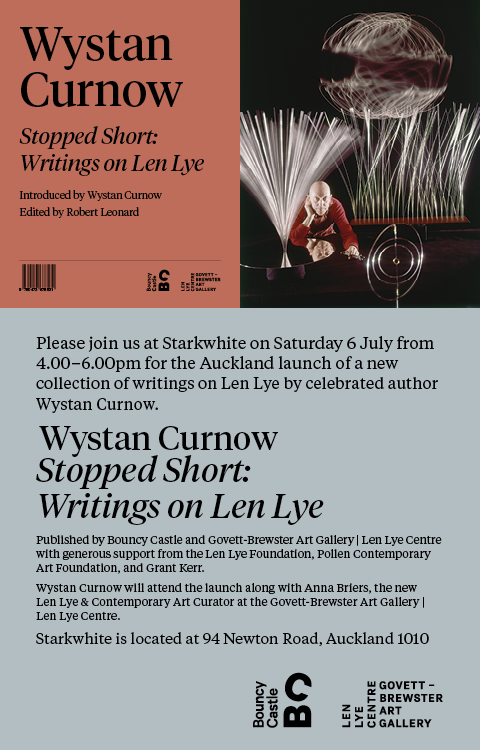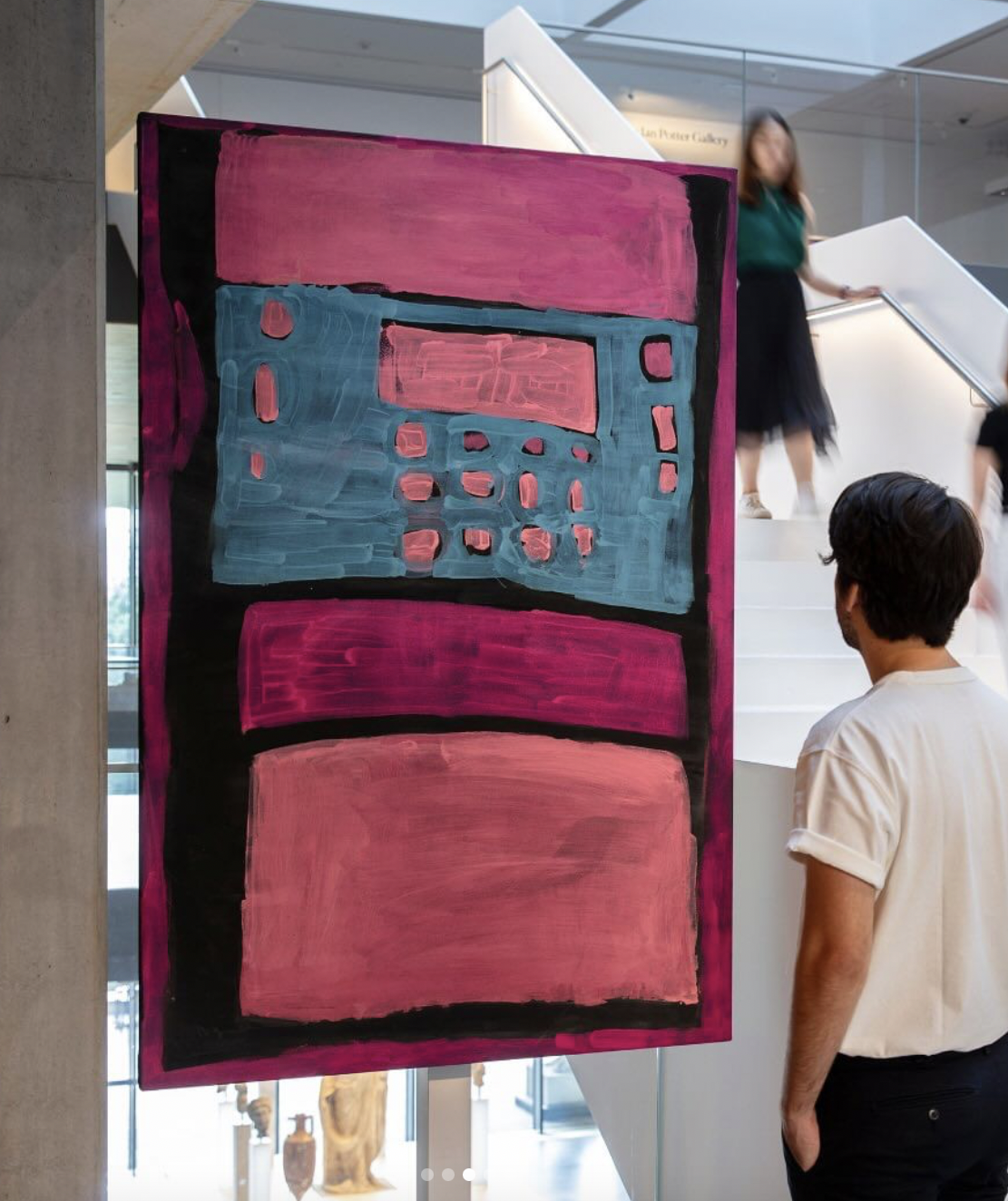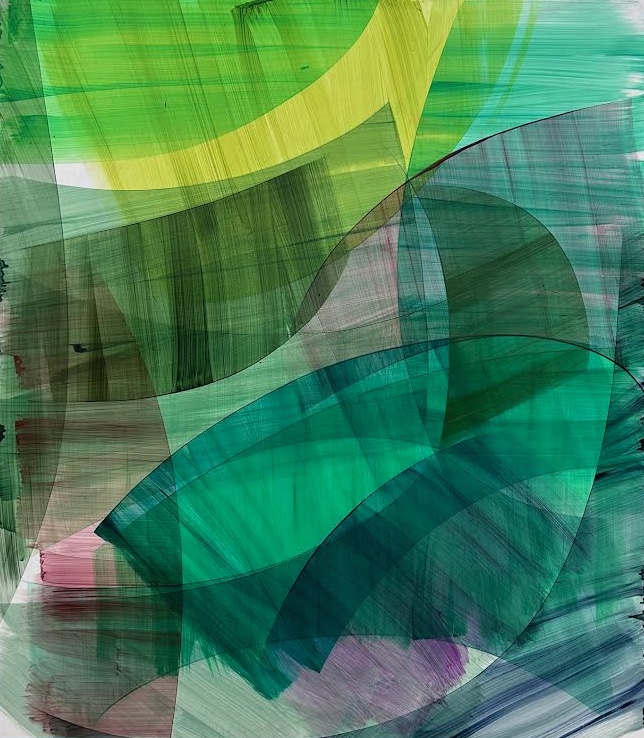Join us.
•


Black Mirror
Doreen Chapman’s paintings of ATM machines are one of the hits of the current Sydney Biennale; they have people talking. They are prominently installed at the entrances of each of the Biennale’s venues, where actual ATMs might once plausibly have been located, as if standing in for them. One scours the Biennale’s wall texts and catalogue in vain for clues of the artist’s purposes in making them or the curators’ purposes in including and positioning them. They remain a curious presence.
Born at Jigalong Mission in the early 1970s, Chapman primarily lives in Warralong Community and paints at Spinafex Hill Studios and Martwill Artists. Her naïve-style paintings often feature landscapes, flora and fauna, cars and aeroplanes, but ATM machines are a new subject for her. Chapman is deaf and non-verbal, and, as much as we may ponder the new works’ significance for her, she’s not telling.
Chapman’s ATM paintings are a mixed bag. Where they feature the acronym ‘ATM’ or a bank logo, the subject is clear. Where they don’t, we would be pushed to recognise the subject, without being told. The paintings have different characters. One, with chubby numerals, reminds me of Claes Oldenberg’s soft sculpture; another is more Rothkoesque.
It’s odd to see abstracted frontal views of ATMs where one might expect to find abstracted aerial views of landscapes. I imagine a gallery guide standing in front of them explaining how money works and what a PIN is, where they might otherwise be telling tales of Country.
The Biennale wall texts describe the paintings as depictions of contemporary Indigenous life. For the urbanised Biennale audience, in the EFTPOS epoch, ATMs and cash may feel like things of the just past—most of us have stopped using them. However, in remote communities, where many are poor, isolated from the internet, and live on benefits, ATMs play a big and central role. They can be few and far between and can run out of money.
I find it disorienting to see these ubiquitous, banal forms from my own culture—the mundane machinery of money—explored as mythic-poetic objects, oddly mirroring the way we are drawn to expressions of other cultures as enigmatic.
•

Sprezzatura
Gemma Smith’s show at Brisbane’s Milani Gallery is a breath of fresh air. At a time when our galleries are laden with issues and identity—and nothing makes sense without consulting the wall text—Smith’s immediate, joyous, eye-candy abstraction comes across as a guilty pleasure.
The Sydney artist’s work may be easy on the eye, but it’s smart. At first, I couldn’t work out how the paintings were made. I thought she may have used masking to generate the shapes. Not so. Actually, she brushes on a thin veil of colour, then shapes it by wiping off excess paint with a cloth. Then another veil is overlaid and shaped. And so on. Smith’s wipes generate arcs. The resulting forms are transparent—hard edged, yet soft and brushy.
In these paintings, everything is busy, yet light and lightness prevail. It’s all contrast and counterpoint. Paint is applied in one direction, then removed in another. There’s the movement (and implied speed) of the application, the movement (and implied speed) of the removal. Plus, there’s the optical drama built up from the interactions of lines and colours. Each work has its own distinct architecture and personality.
These are big paintings, produced up close but to be viewed from a distance. Smith’s ability to keep everything under some control while improvising at the coalface is impressive. She reconciles the geometric and the gestural—drawing and painting—in a new way. Gemma Smith: Orbits, at Milani Gallery, until 27 April.
[IMAGE: Gemma Smith Infinitely 2023]
•
Who Am I?
I am a contemporary-art curator and writer, and Director of the Institute of Modern Art, Brisbane. I have held curatorial posts at Wellington’s National Art Gallery, New Plymouth’s Govett-Brewster Art Gallery, Dunedin Public Art Gallery, Auckland Art Gallery, and, most recently, City Gallery Wellington, and directed Auckland’s Artspace. My shows include Headlands: Thinking through New Zealand Art for Sydney’s Museum of Contemporary Art (1992); Action Replay: Post-Object Art for Artspace, Govett-Brewster Art Gallery, and Auckland Art Gallery (1998); and Mixed-Up Childhood for Auckland Art Gallery (2005). My City Gallery shows include Yvonne Todd: Creamy Psychology (2014), Julian Dashper & Friends (2015), Francis Upritchard: Jealous Saboteurs (2016), Colin McCahon: On Going Out with the Tide (2017), John Stezaker: Lost World (2017), This Is New Zealand (2018), Iconography of Revolt (2018), Semiconductor: The Technological Sublime (2019), Oracles (2020), Zac Langdon-Pole: Containing Multitudes (2020), and Judy Millar: Action Movie (2021). I curated New Zealand representation for Brisbane’s Asia-Pacific Triennial in 1999, the Sao Paulo Biennale in 2002, and the Venice Biennale in 2003 and 2015. I am co-publisher of the imprint Bouncy Castle.
Contact
BouncyCastleLeonard@gmail.com
+61 452252414
This Website
I made this website to offer easy access to my writings. Texts have been edited and tweaked. Where I’ve found mistakes, I’ve corrected them.
.